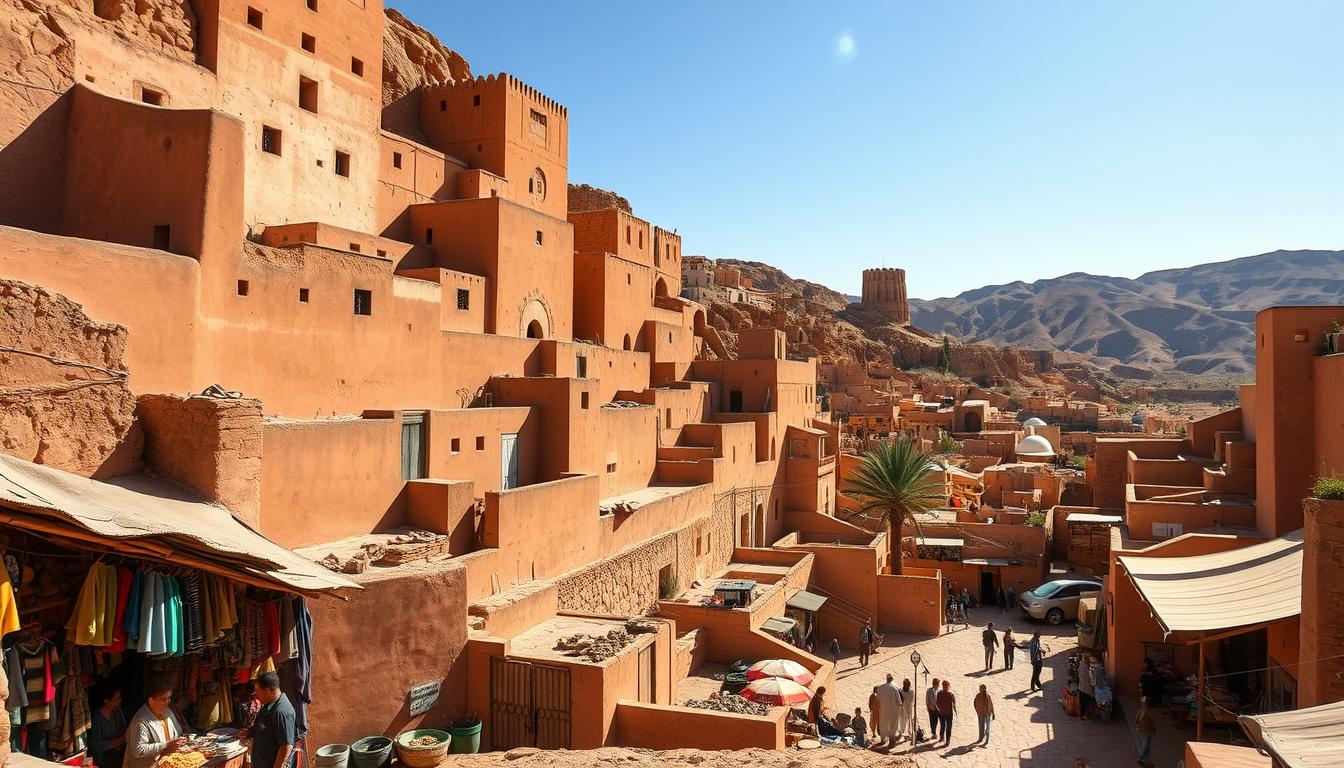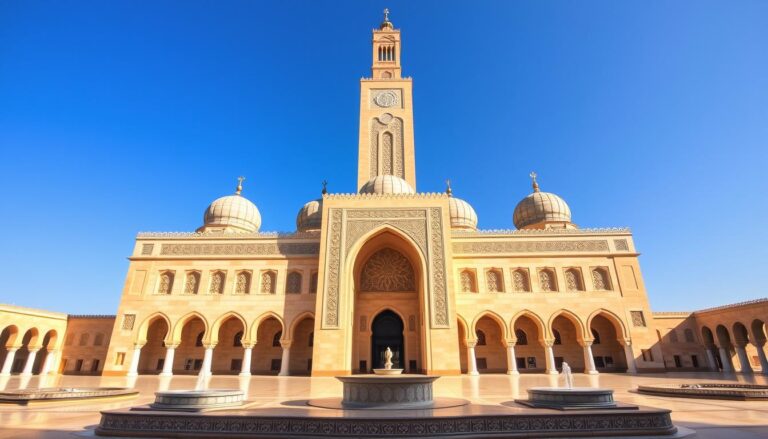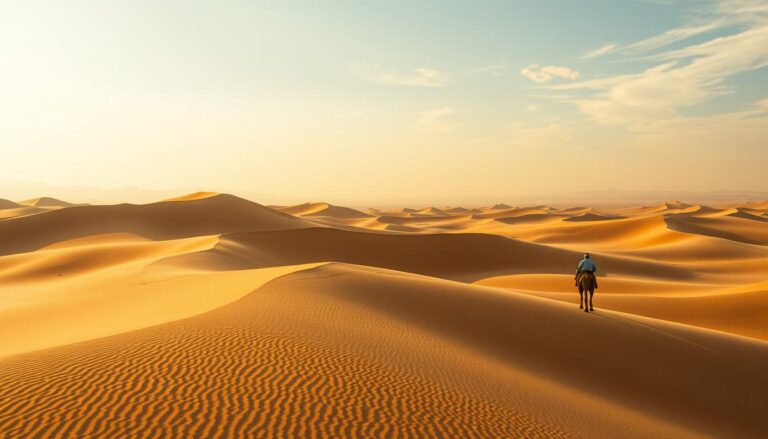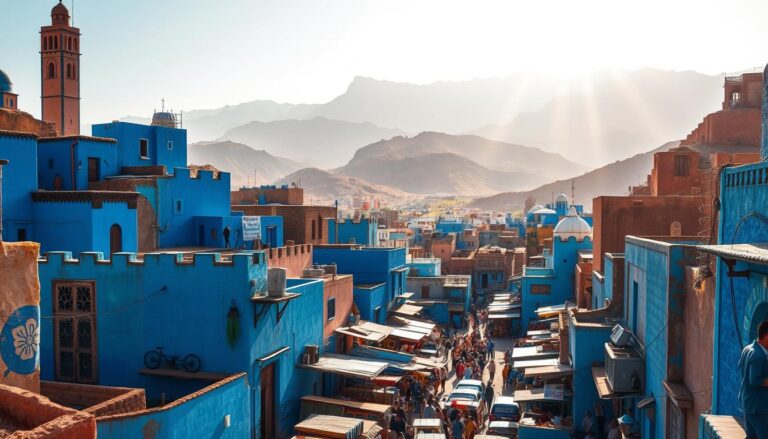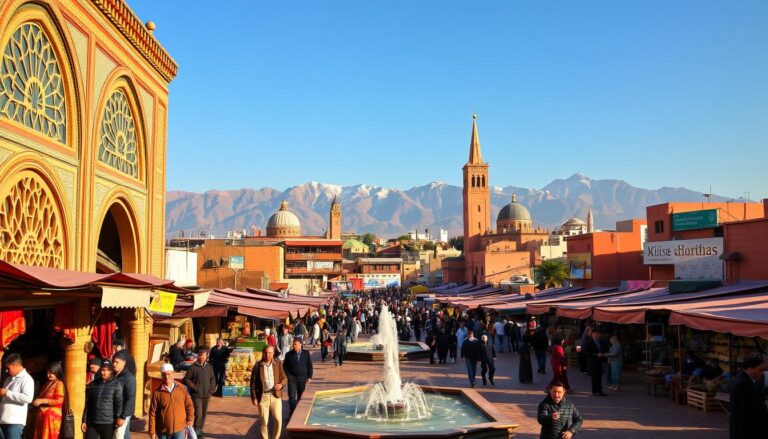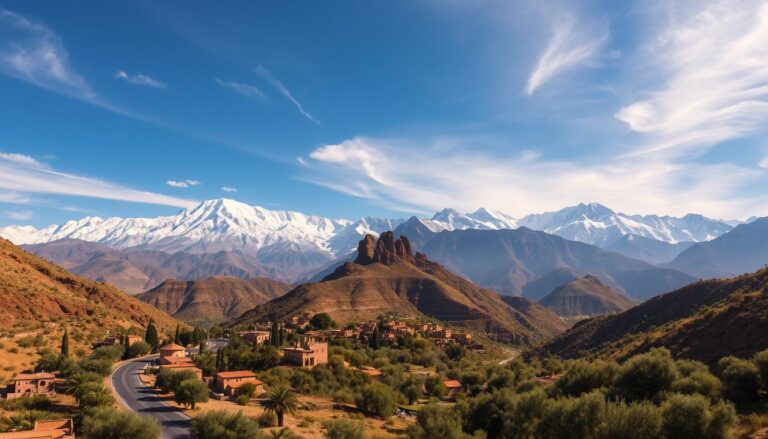Aït Benhaddou Travel Guide: Explore Morocco’s Famous Ancient Village
Table of Contents
Aït Benhaddou Travel Guide: Explore Morocco’s Famous Ancient Village
Did you know only four families still live inside Morocco’s 1,000-year-old clay fortress without modern electricity? This UNESCO World Heritage Site isn’t just a relic—it’s a living village where history breathes through every sunbaked wall. Built into a desert hillside, the labyrinth of six connected fortresses has guarded trade routes since the 11th century.
You’ll walk the same narrow streets where camel caravans once carried gold and salt across the Sahara. Today, Hollywood directors follow in their footsteps—this iconic location starred in Gladiator and Game of Thrones. But there’s more here than movie magic. Families still bake bread in traditional clay ovens and share stories passed down for generations.
Planning your visit requires smart timing. Beat the midday heat by exploring early morning when golden light bathes the terracotta buildings. Stay in nearby modern guesthouses, then cross the river at dawn to see the fortress glow like desert amber. Don’t rush—hidden courtyards and rooftop views reward slow explorers.
Key Takeaways
- One of Morocco’s best-preserved UNESCO sites with 17th-century clay architecture
- Featured in major Hollywood films and TV series
- Active community maintains centuries-old traditions
- Optimal visiting hours are early morning or late afternoon
- Combine with nearby Atlas Mountain adventures
Discovering the Rich History and Architectural Marvels
What began as a desert outpost transformed into a crossroads of cultures and ideas over a millennium. You’ll trace the footsteps of merchants who navigated harsh Saharan routes, their camels laden with spices and textiles. This strategic position made the settlement a vital pitstop between Marrakech and Sudan.
From Dust to Dynasty
The first defensive walls rose in the 11th century, protecting travelers from bandits and sandstorms. By the 1600s, the village blossomed into a cultural melting pot. Scholars debated philosophy while artisans perfected geometric clay patterns still visible today.
Survival Through Innovation
Life here demanded creativity. Residents engineered underground irrigation channels called khettaras to farm arid land. These systems allowed date palms and wheat to flourish against mountain cliffs. UNESCO recognized these groundbreaking techniques when declaring the site a World Heritage treasure in 1987.
Seventeenth-century buildings dominate the skyline, their tapered walls designed to withstand earthquakes. Notice how window placements create natural air conditioning—an early form of climate control. Every architectural choice tells a story of adaptation.
How to Get to Aït Benhaddou
Navigating Morocco‘s rugged landscapes becomes part of the adventure when planning your day trip from Marrakech. The village sits 100 kilometers southeast of the Red City, with most travelers passing through Ouarzazate before completing the final 30-kilometer stretch.
Travel Routes and Transportation Options
From Marrakech, Supratours and CTM buses wind through the Atlas Mountains for 4.5-5 hours. The dramatic Tizi n Tichka Pass route treats you to hairpin turns and sweeping valley views. Pro tip: Book front seats if mountain roads make you queasy.
When you reach Ouarzazate, local taxis complete the journey. Negotiate fares upfront—expect 150-200 MAD each way. Savvy travelers sometimes exit buses early at Tazentout village, cutting 9 km off the trip.
Guided Tours vs. Independent Travel
Organized tours simplify logistics with hotel pickups and expert guides. Many include bonus stops at film studios or desert oases. But you’ll trade flexibility for convenience.
Going solo? Grand taxis from Ouarzazate cost about $20 roundtrip. Drivers often wait 2-3 hours while you explore—perfect for capturing golden-hour photos. Just remember: Haggling skills determine your final price more than any fixed rate.
Planning Your Visit: Best Time and Seasonal Tips
Imagine stepping into a living postcard where seasons paint the desert in different hues. Your experience at this ancient fortress changes dramatically depending on when you arrive—smart timing lets you dodge crowds and embrace perfect exploring conditions.

High Season and Shoulder Season Insights
June through August brings peak crowds and blazing 86°F days. You’ll trade personal space for golden-hour photography opportunities when most day-trippers leave. Local guides recommend arriving at 7 AM to beat tour buses—the fortress gates open at sunrise.
March-May and September-November offer the sweet spot for travelers. Daytime highs hover around 75°F, with nights cooling to jacket weather. You’ll share the site with photographers rather than large groups—perfect for unhurried conversations with resident artisans.
What to Pack for Changing Weather
Desert weather plays tricks. Even summer nights demand a light sweater, while winter days require thermal layers under sun protection. Follow this packing formula:
- Breathable shirts + windbreaker (spring/fall)
- Wide-brimmed hat + SPF 50 (year-round)
- Insulated jacket + gloves (December-February)
Sturdy walking shoes prove essential across all seasons—cobblestone paths become slippery sand traps after rare rains. Plan your trip around morning and late-afternoon exploring hours to maximize comfort. Remember: The best way to experience this location involves adapting to its natural rhythms.
Exploring Aït Benhaddou’s UNESCO World Heritage Site
Step into a living architectural museum where ancient wisdom shapes every wall and alleyway. This world heritage site showcases Berber engineering that’s stood the test of time. Locals still use age-old techniques to maintain structures recognized by UNESCO for their cultural significance.
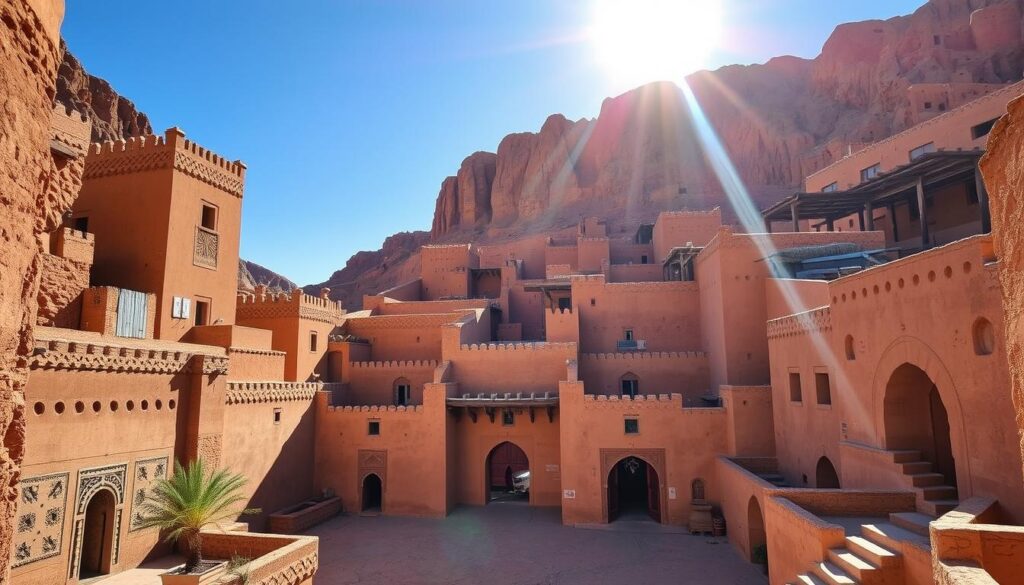
Ksar Architecture and Traditional Berber Design
You’ll marvel at how these mud-based buildings defy harsh desert conditions. Thick walls made from clay, straw, and water create natural insulation. Small windows trap cool air in summer while locking in warmth during chilly nights.
Look closely at the decorative details. Geometric patterns carved into walls tell stories of Berber spirituality. Stars and diamonds symbolize cosmic connections, while zigzag lines represent flowing water—a precious resource in arid lands.
| Feature | Traditional Purpose | Modern Benefit |
|---|---|---|
| Adobe Walls | Temperature control | Zero-energy cooling |
| Sloped Roofs | Rainwater runoff | Natural erosion protection |
| Winding Pathways | Defense strategy | Visitor crowd control |
The entire ksar blends into cliffs like a sandcastle shaped by wind. This camouflage once protected residents from invaders. Today, it creates breathtaking photo opportunities at golden hour.
Don’t miss the rooftop views. You’ll see how builders used local materials to create harmony with the landscape. Palm wood ceilings and terra-cotta tiles prove sustainability isn’t a modern concept here.
Outdoor Adventures Around the Kasbah
The rugged terrain surrounding Morocco’s iconic clay fortress transforms into your personal adventure playground. Beyond the ancient walls, endless opportunities await to explore the Atlas Mountains and surrounding valleys. Whether you crave adrenaline-pumping climbs or peaceful nature walks, this area delivers unforgettable experiences.
Trails That Take Your Breath Away
Lace up your boots for hikes ranging from gentle valley strolls to challenging hill ascents. The popular route to the top behind the fortress rewards you with dual views: modern village life on one side, snow-dusted peaks on the other. Local guides recommend starting at dawn to avoid midday heat.
Camel treks let you travel like desert traders once did. These gentle giants carry you across golden dunes along ancient caravan roads. For faster-paced fun, mountain bikes tackle rocky paths winding through the Atlas Mountains. Rentals in nearby towns include helmets and route maps.
Cliffs and Hidden Pathways
Rock climbers find paradise on weathered cliffs near the village. Routes cater to all skill levels:
- Beginner-friendly cracks with secure footholds
- Technical vertical faces for experts
- Bouldering spots perfect for quick challenges
Prefer keeping both feet on the ground? Scenic walks reveal hidden gems like dry riverbeds and secret viewpoints. The top of Tizi n’Tichka Pass offers Instagram-worthy panoramas—pack layers for sudden weather changes at higher elevations.
Immersing Yourself in Local Culture and Traditions
Stepping into this living heritage site means connecting with traditions older than Hollywood itself. You’ll find locals preserving customs that shaped North African life for centuries. Respectful engagement unlocks authentic experiences most visitors miss.
Cultural Etiquette: Dos and Don’ts
Start interactions with “Salam alaikum”—the universal greeting. Dress modestly with covered shoulders and knees, especially near sacred spaces. Always remove shoes before entering homes, and ask permission before photographing residents.
At meals, use your right hand for eating communal dishes like tajine. Left hands stay in laps—this matters in desert culture. When shopping, haggle gently with smiles rather than hard bargaining. Locals appreciate visitors who value craftsmanship over cheap deals.
Experiencing Local Cuisine and Markets
Follow the scent of freshly baked khobz bread to family-run stalls. Share mint tea with artisans weaving rugs under the same palms their ancestors did. Markets burst with silver jewelry and hand-dyed fabrics—perfect souvenirs supporting village families.
Don’t miss sunset drum circles where Berber music echoes off ancient walls. The rhythms mirror those heard when caravans arrived centuries ago. As stars emerge, you’ll understand why filmmakers chose this backdrop for Game of Thrones—magic lives in every sunset here.

